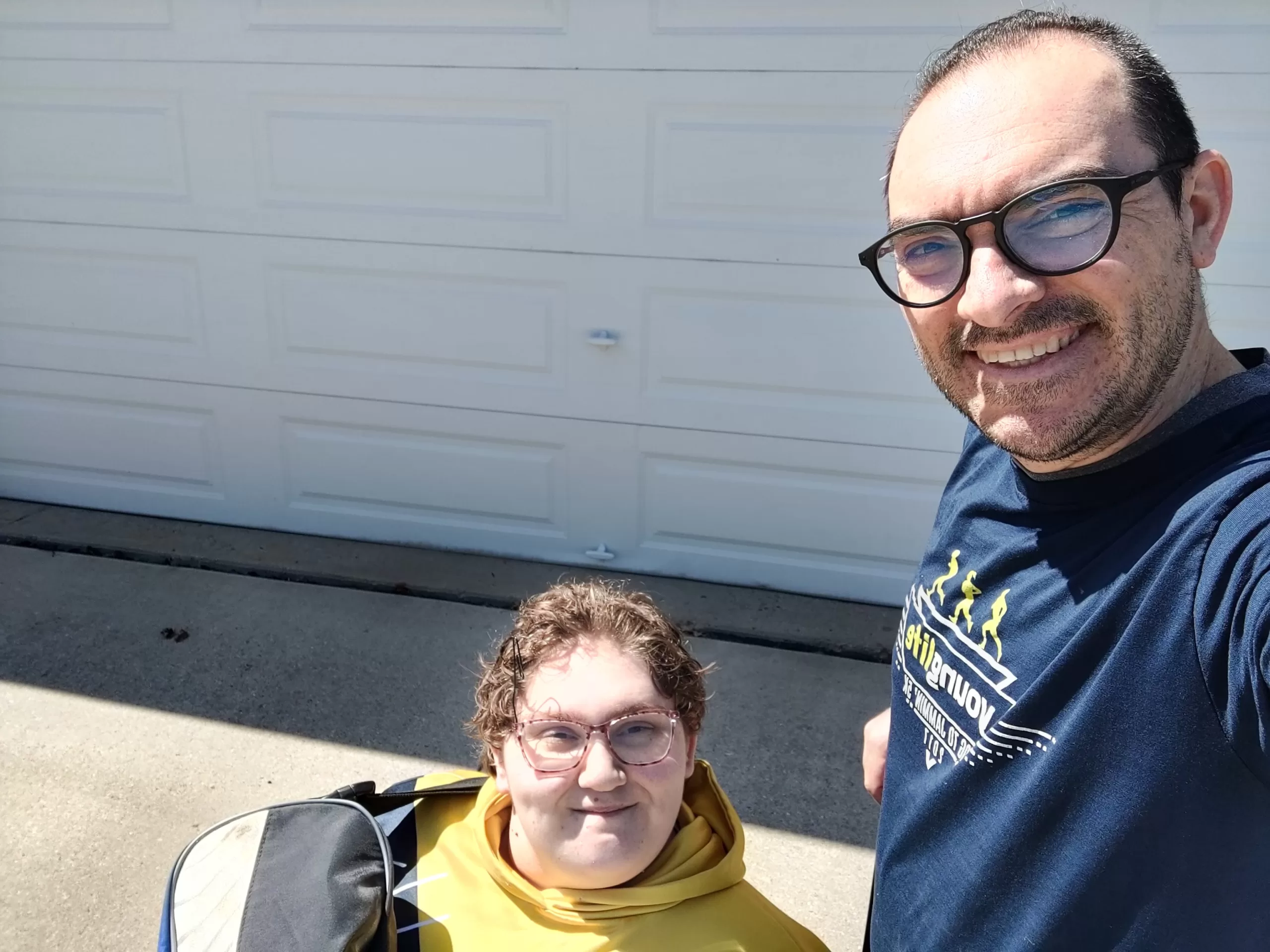Namine was originally diagnosed while in the womb with spina bifida. This was before Children’s Hospital of Wisconsin (hereafter known as CHW) ever entered the picture; this early diagnosis was in Jessica’s OB’s office. (Not the pig-headed one who screwed up her c-section, the good one who referred her to the wound clinic.) But spina bifida is not something you mess around with; the doctor referred us straightaway to CHW. Sitting through that first ultrasound was one of the scariest moments of my life. (And Jessica had to switch OBs, a choice we still regret.)
There have since been scarier moments. Waiting for Namine to come out of open heart surgery, if you’re wondering, tops the list so far. Not knowing whether or not Namine’s idiot nurse messed up her newly repaired cleft palate, and having to wait through the weekend to find out, is also high up there. Don’t ask me to list them all. But I digress.
They determined that Namine did not have spina bifida, but she did have something called caudal regression syndrome (CRS). Now, most people have at least heard of spina bifida, even if only in passing, even though they may not know what it is. But nobody has heard of caudal regression. And I’m almost not even kidding. Spina bifida occurs in about 1 live birth per 1,000. But caudal regression occurs in 1 live birth per 25,000. Those are astronomical odds.
CRS is the malformation of the lower spine, sacrum, tailbone, and lower spinal cord. According to Mosby’s medical dictionary, “caudal” means toward the distal, or furthest, end; “regression” means a retreat or backward movement in conditions. “Caudal regression,” as a term, is used to describe all the sorts of problems that have been observed: partially formed or missing sacrum and tailbone being at the core, which is why the other term is “sacral agenesis.” But that really only describes the problem with the sacrum itself, being malformed or missing, unlike CRS, which encompasses hip, leg, and foot problems as well.
So now I know, thanks to research, what CRS is. But as with nearly anything medical, it doesn’t stop there. There are all kinds of complications: oddly formed or partially formed pelvis, missing tailbone, dislocated hips, missing kneecaps, bowed legs, oddly shaped leg bones, shortened leg bones, and club feet, just to name a few. It would be nearly impossible for me to list all the various complications, and degrees of complications. There are incontinence issues, some of which can be amended with surgery, some of which cannot. Some CRS patients are paralyzed from the waist down, some from the knees down, some not at all. Some have webbing around the knees, preventing a fully straightened leg. There are sacral dimples, occurring in the back (for Namine, in the hips/thighs). The list is nearly endless.
It’s almost to the point where I know nothing much more useful than when I began. CHW, after all, did not provide us very much information on CRS itself. They’ve been very helpful with Pierre Robin Sequence and double-inlet left ventricle heart defect, but CRS not so much. I think, now, I know why. With DILV, there’s a set procedure, a set series of surgeries required. (They had to modify the first a bit to fit Namine, but the Glen was standard, and they expect the Fontan to be by the book as well.) But with CRS, your guess is as good as mine. They told us Namine probably wouldn’t be able to even move her legs. Boy, were they wrong there.
I think it’s enough to be aware of the potentials, not worry too much about what might happen, and focus on who my daughter is now. How she grows and what will happen, that will take care of itself.



Leave a Reply to Amy Robinson Cancel reply